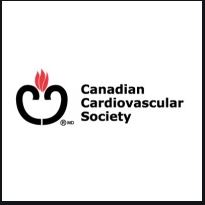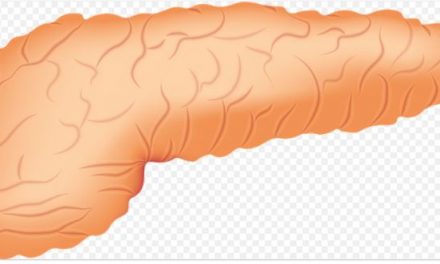We know that optimizing lipid (cholesterol) levels is an important part of reducing the risk of cardiovascular disease.
The recently released 2021 Canadian lipid guidelines provides updated recommendations based on important new evidence since the last iteration of the guidelines in 2016.
Some of the key updates include:
- changes in how to screen for dyslipidemia
- different cholesterol thresholds for different groups of people, for intensifying treatment with non-statin agents
- the role of coronary artery calcium (CAC) scoring in deciding whether or not to recommend statin therapy
- preventive care of women with hypertensive (high blood pressure) disorders of pregnancy
- guidance on who will benefit most from adding PCSK9 inhibitor to statin therapy (how to choose vs ezetimibe?)
- CV benefit of icosapent ethyl in patients with triglycerides 1.5-5.6mmol/L and a prior CV event, or with diabetes and additional risk factors
- the lack of CV benefit of omega-3 fatty acids from supplements or dietary sources
I am splitting up my lipid guideline blogging into three parts, focusing on treatment, and following the figures (pg 37-39) for treatment in the guidelines:
- TREATMENT APPROACH FOR PRIMARY PREVENTION PATIENTS
- TREATMENT APPROACH FOR PRIMARY PREVENTION PATIENTS WITH A STATIN INDICATED CONDITION
(familial hypercholesterolemia, genetic dyslipidemia, chronic kidney disease, diabetes) - TREATMENT APPROACH FOR PEOPLE WITH ESTABLISHED ATHEROSCLEROTIC VASCULAR DISEASE
Today, we’ll talk about some of the key points in the TREATMENT APPROACH FOR PRIMARY PREVENTION PATIENTS.
Before I get into the treatment approach for primary prevention patients (those without cardiovascular disease or a statin indicated condition), let’s first review some of the highlights of screening for dyslipidemia (cholesterol check):
- Who to screen: men and women ≥40 (possibly earlier in ethnic groups at increased risk), or anyone with any one risk factor – see table 1, page 35)
- How to screen : NON fasting cholesterol checks are recommended (unless triglycerides are >4.5 mmol/L, in which case testing should be repeated fasting)
- Lipoprotein (a) once in a patient’s lifetime, with initial screening (see Table 2, pg 36 for details on other lab tests to check)
- Recommendation: if triglycerides are >1.5mmol/L, non-HDL or ApoB should be used instead of LDL as the preferred parameter for screening.
- Recommendation: coronary artery calcium (CAC) screening may be considered for asymptomatic people age ≥40 at intermediate risk (Framingham score 10-19%), and a subset of people age ≥40 at low-risk (Framingham score <10%) with a family history of premature CV disease
OK, now – let’s get into the key highlights in the TREATMENT APPROACH FOR PRIMARY PREVENTION PATIENTS.
Follow along with Figure 1 (page 37) in the guidelines manuscript – a picture really does speak 1000 words!
***Please note: below are the highlights – please see the figure or the text of the guidelines itself for full details.***
First steps:
- Calculate Framingham risk score to guide whether statin therapy is recommended.
- Remember: Health behavior changes remain the cornerstone of disease prevention.
Treatment: Statin therapy continues to be recommended for:
All high risk patients (Framingham score ≥20%)
Intermediate risk patients (risk score 10-19%) when:
- LDL is ≥ 3.5 , or apoB is ≥1.05 g/L, or non HDL is ≥4.2 mmol/L
- men ≥50 or women ≥60 with several additional cardiovascular risk factors (low HDL, impaired fasting glucose, increased waist circumference, cigarette smoking, hypertension)
- hsCRP ≥2.0 mmol/L, family history of premature heart disease, high Lp(a) ≥50 mg/dL (100 mmol/L), or CAC >0)
Low risk patients (risk score <10%) when
- LDL ≥5.0, or apoB is ≥1.45 g/L, or non HDL is ≥5.8 mmol/L
- risk score is 5-9.9% with LDL ≥3.5, or apoB ≥1.05, or non HDL ≥4.2, particularly with other CV risk factors (these patients should follow the intermediate risk approach above)
Note: the Framingham risk is about double for people age 30-59 without diabetes who have a family history of premature heart disease in a first degree relative (≤55 years in male relatives and ≤65 years in female relatives).
Second line therapy: If not at target on maximally tolerated statin dose: consider ezetimibe as an add on treatment, or bile acid sequestrant as an alternative.
Important points:
- Statins consistently show a 20-22% relative risk reduction for every 1 mmol/L reduction in LDL.
- Evidence continues to show benefits of keeping low cholesterol levels throughout life, at any age, and at any level of risk.
- Accumulating evidence suggests continued benefits of lipid lowering for primary prevention in older adults (>75 years)
- Recommendation: do NOT use over the counter omega 3 polyunsaturated fatty acid supplements to reduce CV risk, as these supplements do not reduce CV risk. (More on this in the coming blog posts, stay tuned!)
Stay tuned for the next blog post on TREATMENT APPROACH FOR PRIMARY PREVENTION PATIENTS WITH A STATIN INDICATED CONDITION.
Share this blog post using your favorite social media link below!
Follow me on twitter! @drsuepedersen
www.drsue.ca © 2021












